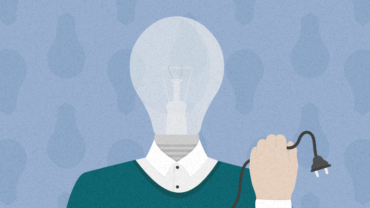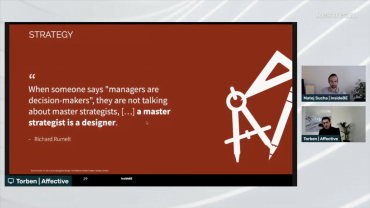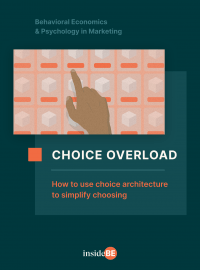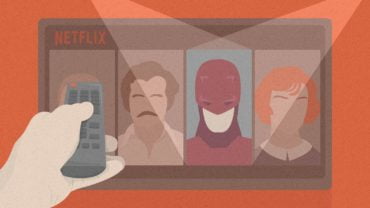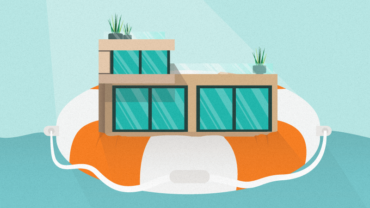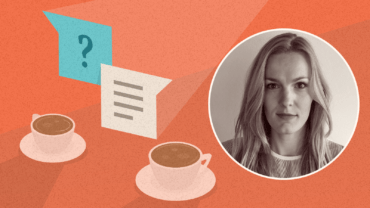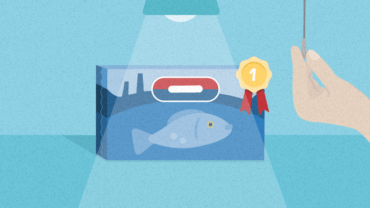Decision Fatigue – Everything You Need to Know
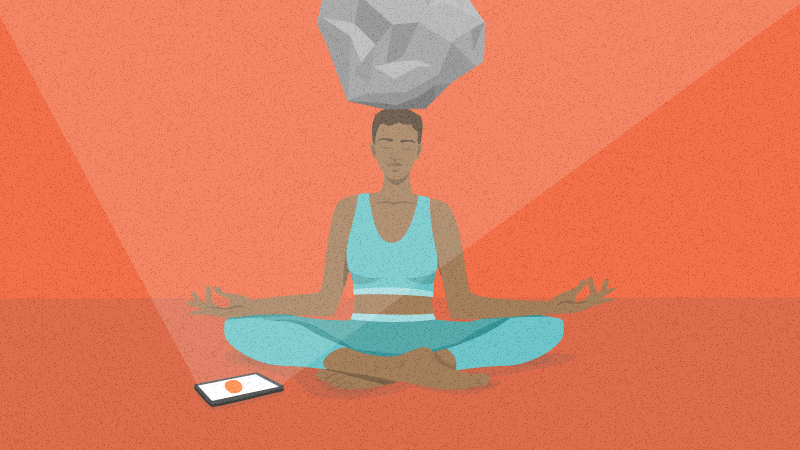
Decision fatigue describes how our decisions become worse when we’re asked to make lots of choices. Here’s everything you need to know about this behavioral economics concept.
Article content:
Decision fatigue defined
Decision fatigue is a lowered ability to make good decisions as the number of choices a person makes increases.
It says that the more choices a person makes throughout the day, the more likely it is that their later decisions will be of lower quality.
Decision fatigue is the reason that we often feel more capable at work during the morning, load our baskets with extras at the grocery store checkout, or leave the car dealership with a premium warranty deal that we didn’t really want.

Source: Display
How does it work?
Behind decision fatigue is the concept of mental energy or willpower – a finite amount of energy available to the brain for performing cognitive tasks, which can be exhausted. Psychologists sometimes refer to this in Freudian terms as the ego.
When mental energy is low, the brain adopts different decision-making strategies to save resources.
Researchers who subscribe to the idea of willpower believe that, when mental energy is low, the brain adopts different decision-making strategies to save resources.
Decision fatigue describes those low-power mode strategies – cognitive shortcuts activated after a person has spent their energy on other tasks and choices – as often resulting in less rational or more impulsive decisions.
How decision fatigue works
We make tons of conscious and unconscious decisions every day (up to 35,000 if you believe the internet).
Most of them are tiny and relatively inconsequential, such as whether to sit by the aisle or window on the bus, order chicken or chickpea salad for lunch, or watch a movie or documentary in the evening.
But, no matter how important a decision is, your brain still spends energy on making that choice. As we go through our day, those of us required to make more choices may find ourselves paying a higher biological price.
As energy gets low and decision-making becomes a greater mental tax, the brain looks to delay or shorten the decision-making process. This may result in procrastination or indecision in some situations – and impulsivity in others.
As energy gets low and decision-making becomes a greater mental tax, the brain looks to delay or shorten the decision-making process. This may result in procrastination or indecision in some situations – and impulsivity in others.
Decision fatigue can become particularly noticeable if we’re required to make important choices during these periods of lowered cognitive ability.
In this way, decision fatigue doesn’t account for how rational a person is, or how important they consider a decision to be. Instead, it says that the mental cost of all decisions is cumulative.
In fact, decision fatigue says that our ability to make good decisions is more context-dependent than a personality trait – that it’s conditional upon the number of decisions we’ve already made.
How decision fatigue works in everyday life
In daily life, decision fatigue closely maps our routines and responsibilities.
The number of calories we consume and the amount of sleep we get, alongside our stress levels, can make decision fatigue more or less likely.
Choice-heavy environments, such as the grocery store or quarterly planning meetings, are most likely to elicit decision fatigue. People experiencing it can show a bias toward options that keep the status quo and don’t require trade-offs.
Combining a choice-heavy environment with poor sleep and low glucose levels will make decision fatigue even more likely.
For example, if you’re suffering from decision fatigue when buying groceries, you might choose to stick with your regular brand of cereal even though there’s another box on sale from a higher-quality brand, which looks like it might be a better deal.
Likewise, a decision-fatigued manager is more likely to opt to repeat last quarter’s mildly successful sales strategy, even though an account executive has put together a solid pitch for improvements.
Combining a choice-heavy environment with poor sleep and low glucose levels will make decision fatigue even more likely.

Discover ground-breaking ideas and fascinating solutions.
How decision fatigue works in business
Corporate environments, where sleep deprivation and high-pressure decision-making converge, are particularly susceptible to the effects of decision fatigue.
When procrastination and decision avoidance exist on an institutional level, a culture of change resistance can occur. Sticking with the status quo can stifle creativity, make organizations less reactive, and leave undiagnosed problems to worsen.
Some businesses attempt to preempt decision fatigue through the way work environments are structured. Providing employees with transport, food, laundry, and other benefits can remove lots of daily decisions, while four-day work weeks may help prevent burnout and focus energy.
Why decision fatigue happens
Many researchers believe that decision fatigue happens because our brains operate on finite energy resources, meaning that we have a limited ability to think rationally about complex situations.
As willpower is spent on tasks that require focus, logic, or restraint, the brain becomes less able to process difficult thoughts – a phenomenon that’s often termed ego depletion by psychologists.
What impact does decision fatigue have?
Continuing to make choices while suffering from decision fatigue can have significant negative consequences – especially if a person’s decisions have impactful consequences.
People may become indecisive or begin to procrastinate, or worse, begin making rash decisions to complete the decision-making process as quickly as possible. The four generally accepted symptoms/effects of decision fatigue are:
- Procrastination
- Impulsivity
- Indecision, and
- Decision avoidance
People with decision fatigue may also feel generally tired and experience symptoms of stress such as headaches and brain fog.
Salespeople are sometimes trained to anticipate the onset of decision fatigue, waiting until a customer’s reasoning abilities are compromised before trying to close a deal.
Some (arguably unethical) companies may even design environments to produce decision fatigue and encourage customers to make impulsive choices. Think of car dealerships with no AC that drag out paperwork for hours, or banks that offer lots of similar credit cards with confusingly small differences.
Decision fatigue can be a poverty trap. Dean Spears, a Princeton economist, studied the impact of decision fatigue on low-income populations. He found that those experiencing poverty are frequently required to make decisions and trade-offs when spending money throughout the day.
Those experiencing poverty are frequently required to make decisions and trade-offs when spending money throughout the day.
This extra burden can exacerbate decision fatigue, which degrades the quality of decision-making. The result is a vicious cycle, where people with lower incomes are more likely to make worse spending decisions.
Decision fatigue can also lead to people avoiding decisions altogether – an effect called decision avoidance. Taking no action is the ultimate short-term response to mental exhaustion.
Another corollary of decision fatigue is an increased chance of experiencing choice overload. This term describes how people can experience greater difficulty and become less satisfied with their choices as the number of options in a decision increases.
Decision fatigue can reduce the number of options we’re able to consider without experiencing symptoms of choice overload.
The history of decision fatigue
Decision fatigue as a behavioral concept was first introduced by the social psychologist, Roy F. Baumeister, in his much-cited 1998 paper, “Ego depletion: is the active self a limited resource?”
In the study, Baumeister brought the concept of willpower – or ego depletion, as he calls it – out of the realm of 19th-century Freudian metaphor and into contemporary science. The paper claims to show that our mental resources are finite and can be exhausted, just like our physical strength.
Study participants were separated into two groups and presented with two bowls of food, one containing chocolate chip cookies; the other containing radishes. One group was allowed to eat cookies while the other was asked to show self-restraint and only eat radishes.
After eating, both groups worked on a difficult puzzle that, unbeknownst to them, was unsolvable.
People who demonstrated self-control and desire avoidance were more likely to show reduced willpower in later tasks.
The cookie-eaters and the control group both spent much longer attempting to solve the puzzle than the radish eaters – around 19 minutes versus 8 minutes – leading Baumeister to conclude that the radish eaters’ egos had been depleted due to spending energy when resisting the cookies.
The study sparked a series of experiments by Baumeister and his colleagues, asking participants to take part in ego-draining tasks before having their willpower tested. Their research found that people who demonstrated self-control and desire avoidance were more likely to show reduced willpower in later tasks.
Baumeister’s research has even suggested that “regular exercises in self-regulation can produce broad improvements in self-regulation,” just like working out muscles at the gym.
However, more recent work has brought Baumeister’s conclusions about ego depletion into question.A 2016 study in Perspectives on Psychological Science with over two thousand participants failed to reproduce Baumeister’s results. Likewise, two studies from the journal PLOS ONE could not replicate Baumeister’s original outcome.
Decision fatigue experiments
Other scientists have continued to look at how decision fatigue emerges in different contexts. Here are some of the most famous experiments demonstrating decision fatigue.
Suits and cars
Stanford professor Jonathan Levav demonstrated decision fatigue in experiments involving tailored suits and new cars.
The study asked M.B.A. students in Switzerland to design bespoke suits for themselves, making decisions on suit fabric, lining, shirts, ties, buttons, socks, and belts. Levav found that students became more likely to opt for default styles and materials (and less inclined to make personal decisions) as “the number of options available decreased throughout the decision sequence.”
Students became more likely to opt for default styles and materials (and less inclined to make personal decisions) as “the number of options available decreased throughout the decision sequence.”
Levav also studied real car buyers spending their own money, as they navigated a long list of build choices and optional extras – things like wheel rims, engine type and interior materials. He found that the buyer’s attentiveness degraded as the decisions mounted, with people becoming more likely to choose default options in later choices.
Spears and soap
Dean Spears’ research reveals the effects of decision fatigue in impoverished northwestern Indian villages.
He set up a shopping situation in twenty villages, where customers could choose to buy heavily discounted bars of soap. After shopping, customers had their grip strength tested as a measure of endurance.
Spears found a correlation between lessened grip endurance and the level of poverty in a village. He claimed that shoppers from the poorest villages were required to spend more mental energy when considering whether or not to buy discounted soap instead of other goods, resulting in reduced test performance.
Shoppers from the poorest villages were required to spend more mental energy when considering whether or not to buy discounted soap instead of other goods, resulting in reduced test performance.
Nurses
A study in Health Psychology looked at nurses’ performance in relation to the length of their shifts and the number of breaks they took.
It found that nurses who went longer without taking breaks were more likely to choose less efficient patient management strategies and make more expensive clinical decisions.
Nurses who went longer without taking breaks were more likely to choose less efficient patient management strategies and make more expensive clinical decisions.
Business Analysts
In a study on the performance of a group of business analysts, participants were found to make less accurate business forecasts as the day continued – with the analysts more likely to fall back on heuristics (cognitive shortcuts) in the afternoon than in the morning.
How to avoid decision fatigue
Reduce necessary choices or decisions
Decision fatigue says that all decisions, big or small, accumulate equally. So, the easiest way to reduce decision fatigue is to remove as many small decisions from your day as possible.
If willpower is a finite resource (and remember, not all psychologists agree that it is) then by strategically allocating it, you can save your energy for the day’s most critical choices.
Many famous decision-makers implement decision-reduction strategies. Be like Obama, Jobs, or Zuckerberg and wear the same set of outfits every week. Or try the Warren Buffett approach and order the same lunches for decades.
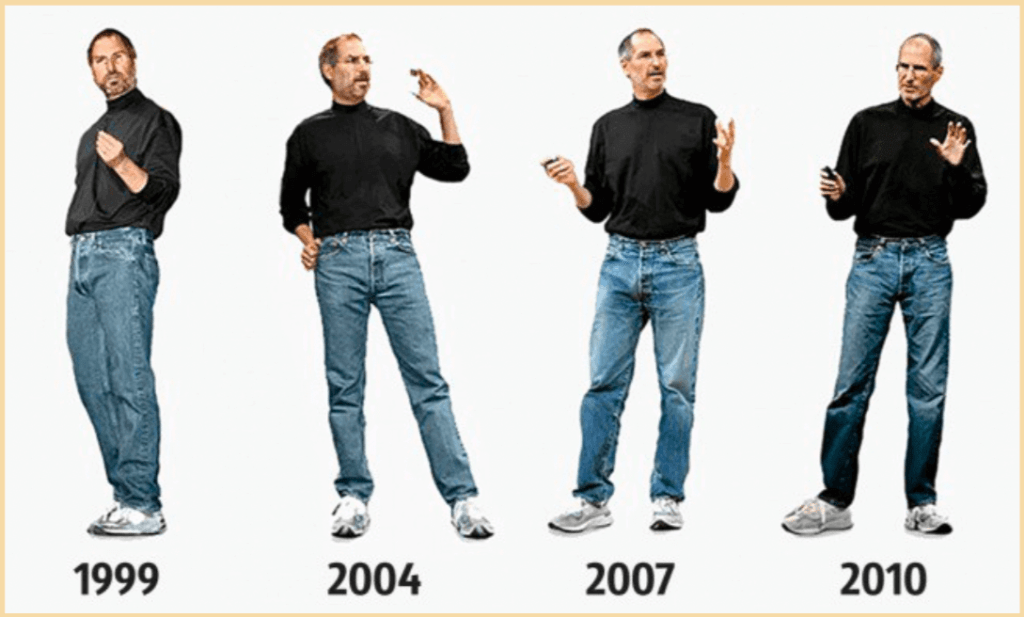
Source: Medium
Make important decisions earlier in the day
Another simple way to reduce the impact of decision fatigue is to account for declining cognitive energy in the way you structure your time.
Schedule important meetings and critical-thinking tasks for earlier in the day and save more monotonous activities that don’t require as much rational decision-making for later on.
Manage your glucose levels
One of Baumeister’s papers claimed that “acts of self-control reduced blood glucose levels.” It was found that participants who “consumed a glucose drink” were better able to maintain their performance in decision-heavy tasks.
It was found that participants who “consumed a glucose drink” were better able to maintain their performance in decision-heavy tasks.
This reflects a popular view that clear thinking can be helped by managing blood sugar levels, keeping yourself fed and hydrated – and not making decisions when you’re particularly hungry or thirsty.
It’s always a good idea to eat healthily when trying to stave off decision fatigue. However, the close correlation Baumeister draws between decision fatigue and glucose levels has been questioned by later psychologists.
One major objection relates to the fact that the brain consumes a steady amount of glucose regardless of task difficulty. Another is that the body cannot process consumed glucose quickly enough to make a measurable difference in people experiencing decision fatigue.
As a Stanford study shows, a more nuanced view of the connection between snacks and mental energy may be centered on people’s beliefs about whether a glucose drink or trail mix will boost their willpower.
Decision fatigue examples & case studies
Netflix
Streaming apps ask us to choose from large content selections, and can quickly spark decision fatigue if effective UX design isn’t on point.
Netflix helps its users avoid decision fatigue by making decisions happen more quickly and feel less important.
To do this, the company restricts movie choices and introduces subcategories to reduce the number of options a user needs to consider at a single time. They also try to make decisions for users by offering personalized options and making it easy to resume watching shows that you’ve already started.

Source: Tech hive
Tolerance depletion
Many studies on decision fatigue are designed to show that spending mental energy on earlier tasks will lower performance when people later need to exercise self-control.
As a result, you can find instances of decision fatigue in any situation where a set of decisions is followed by an activity that requires willpower.
Ordering junk food when you’re tired, being cavalier with social media posts later at night, or finding that you’re better at forcing yourself to work out or take cold showers in the mornings, may all be symptoms of decision fatigue.
The pandemic
The American Medical Association points out that many people “probably experienced decision fatigue during the pandemic,” because we were required to make a large number of extra decisions and consider new trade-offs across swathes of our daily lives.
Combating decision fatigue in business
While decision fatigue can’t necessarily be cured, it can be accounted for – especially when designing customer journeys that involve multiple choices.
Pick the right choice architecture
Choice architecture refers to the sequence in which customers are presented with various decisions. Good choice architecture reduces choice overload and decision fatigue by making it easy for people to navigate apps, sales platforms, or in-person transactions.
Businesses can improve their choice architecture by separating complex choices into multiple stages, or categorizing and comparing information so that the implications of different choices are clear.
The way companies frame decisions can also be impactful. Customers often find it easier to opt out of features than opt-in, so pre-selecting optional product features can help customers consider them without spending as much mental energy.
Create meaningful defaults
Customers (and employees) experiencing decision fatigue are more likely to forgo thinking about choices in favor of sticking with the default option.
Because of this, one way to combat decision fatigue in business is to make default options as robust and meaningful as possible.
Netflix and other streaming services give users the ability to continue watching where they left off, or quickly select a show that’s similar to their watch history.
British bank Lloyds increased insurance package sales by making their default insurance package more appealing and easier to select.
The bank cut its insurance products from three to two – leaving a basic, default option for customers experiencing decision fatigue, and a more complex option for customers with greater mental resources available.
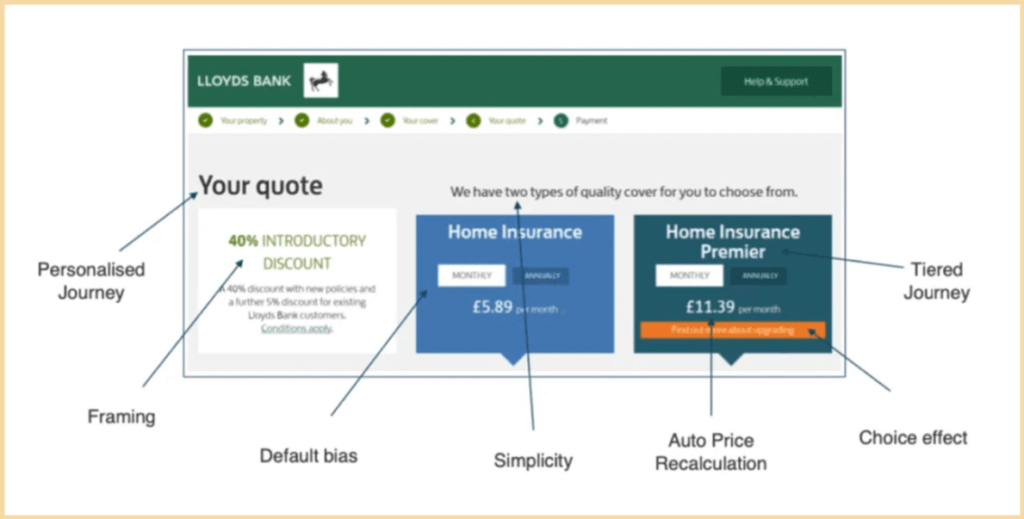
Source: Lloyds Bank
Summary
What is decision fatigue?
Decision fatigue describes how people’s decision-making abilities tend to decline across a set of decisions.
Decisions made later in the day are more likely to involve procrastination, impulsivity, and other mental shortcuts or heuristics than decisions made earlier on.
Why does decision fatigue happen?
Psychologists such as Roy Baumeister argue that the brain has access to finite mental resources. When willpower is depleted, the brain begins adopting suboptimal decision-making strategies to help conserve energy.
Other psychologists have disputed Baumeister’s research on ego depletion – although they may still recognize the phenomenon of decision fatigue.
What impact can decision fatigue have?
A person experiencing decision fatigue is less likely to use rational decision-making strategies in favor of heuristics. Commonly, this can result in procrastination, indecisiveness, or impulsivity.
A reluctance to make decisions when fatigued also produces a bias toward the default. People experiencing decision fatigue are therefore less likely to assess the pros and cons of different options.
How can I avoid decision fatigue?
Individuals can reduce the effects of decision fatigue by controlling the number of choices they make across a day.
Removing smaller choices like what clothes to wear, what to eat for lunch, or when to leave for work can “make room” for more significant decisions. Similarly, structuring a day’s decisions so that important or complex choices coincide with periods of high mental energy should mean that decision fatigue becomes less noticeable.
Businesses can follow the same principles to reduce (or increase) decision fatigue in customers. Good choice architecture limits the number of decisions a user needs to make, and offers meaningful default options.
Salespeople with questionable ethics who want to encourage decision fatigue in their customers (to wear down their mental resources) can do the opposite – by asking people to make lots of decisions and choose between many different details.
